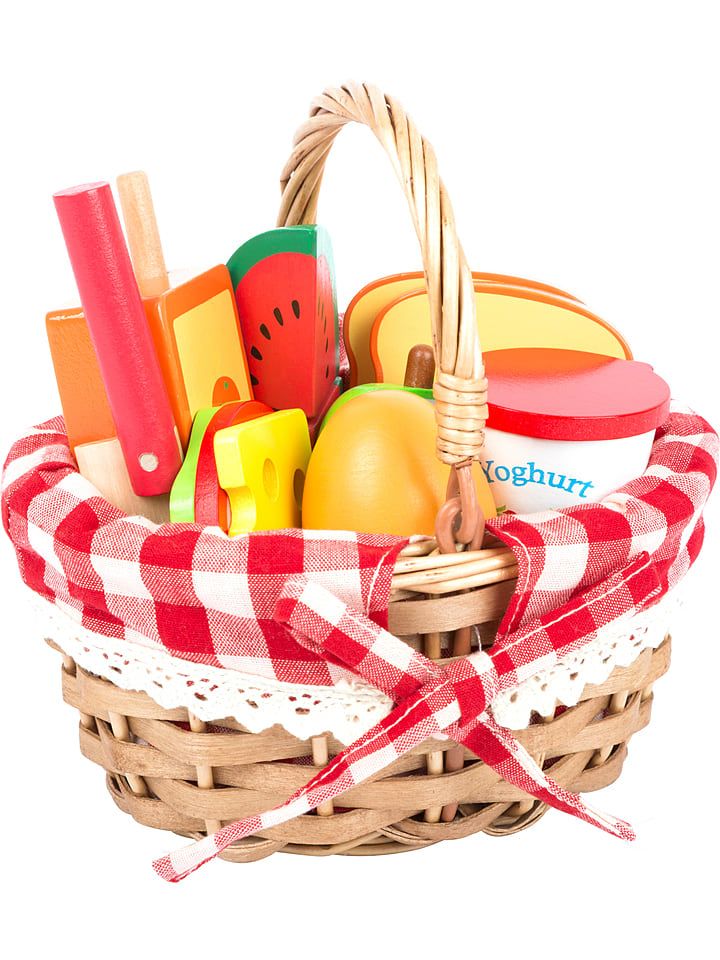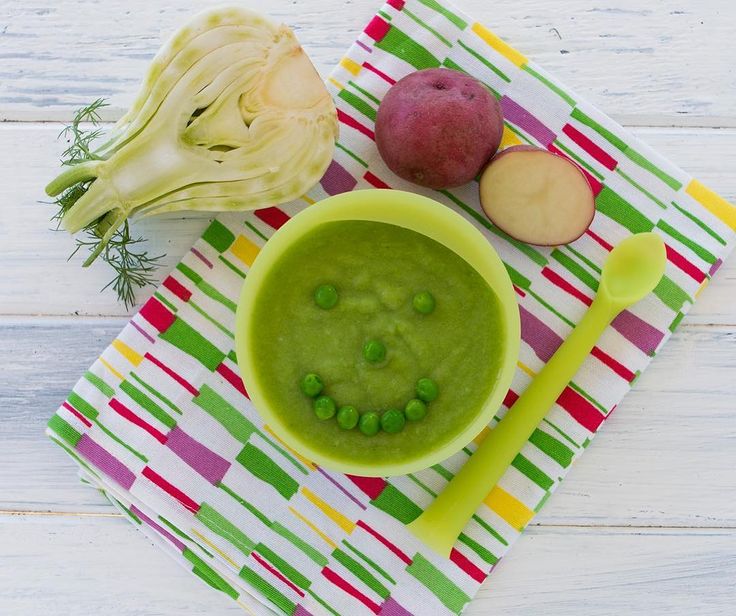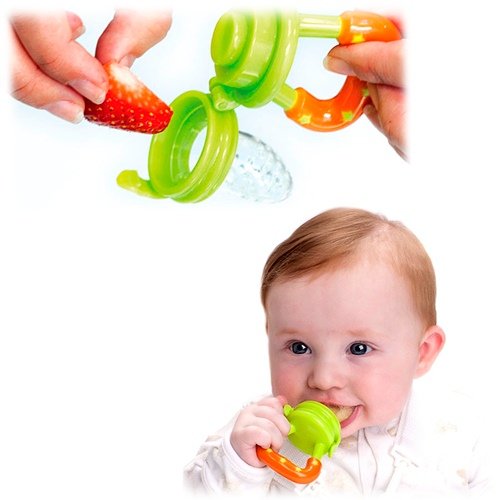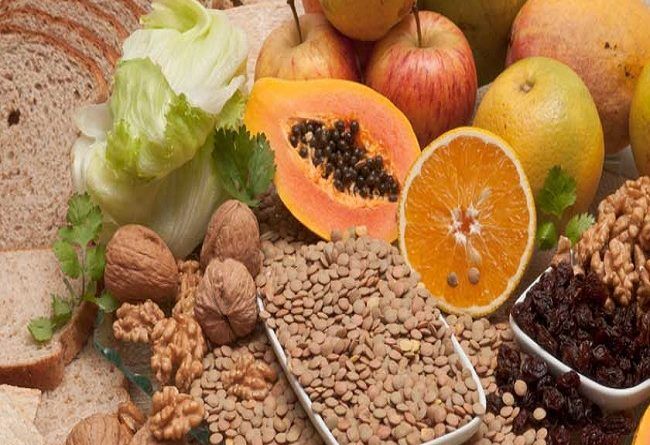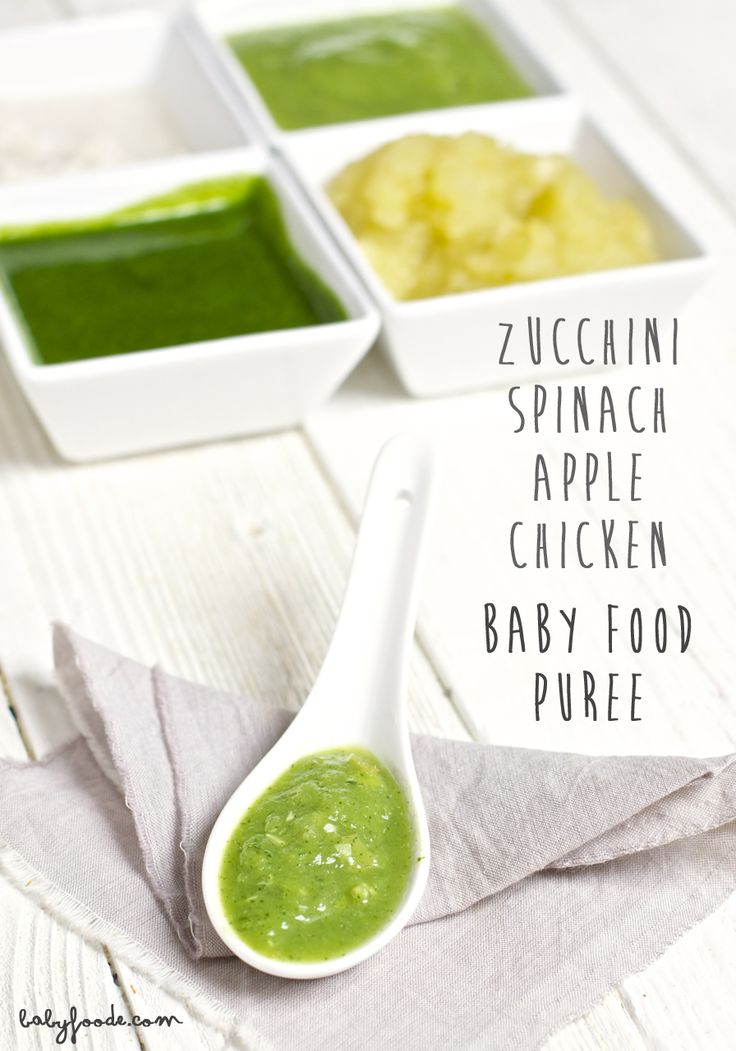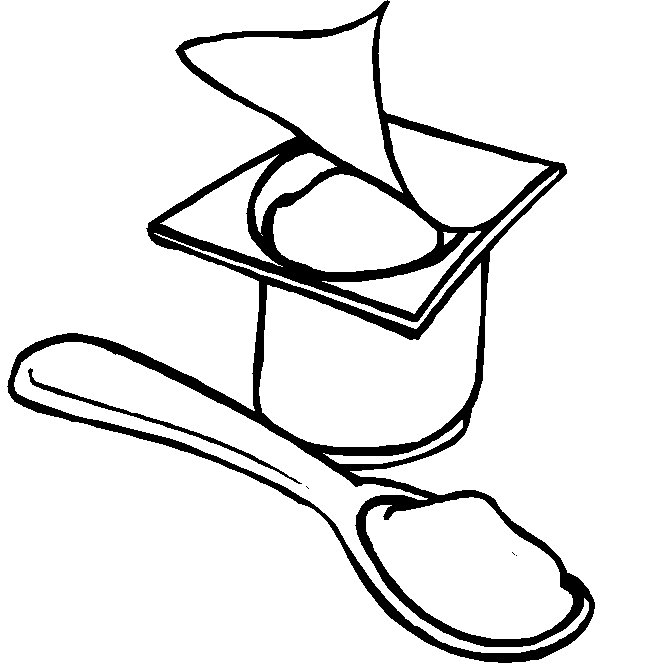Am i feeding my baby too much solid food
Are You Feeding Your Baby Too Much Solid Food?
Home / baby-solid-foods-complications / Are You Feeding Your Baby Too Much Solid Food?
by Emily DeJeu in baby-solid-foods-complications, Breastfeeding —
It’s always nice when a baby who’s just started eating solid foods shows a real appetite for them. As a parent, you know that it feels great to offer your little one healthy purees and then watch as she gobbles them up.
But can that healthy appetite ever be a problem? Can a baby actually eat too much solid food?
In a word, yes.
Remember, for the first year of life, a baby’s primary source of nutrition should be breastmilk and/or formula. It’s just fine to offer solid foods (starting around 5 or 6 months), but solid foods shouldn’t replace breastmilk or formula as a source of nourishment.
In this article, we’ll explore two signs that you may be feeding your baby too much solid food and two easy ways to fix the problem.
-
Your baby regularly eats more food than is recommended.
There’s no formula for exactly how much food you should be offering your baby at each meal; rather, its best if you use your baby’s own hunger cues and appetite as a guide.
But if you find that your baby is routinely eating more than is recommended, you may want to consider offering a bit less food at each sitting. A healthy appetite is a good thing, but not if your baby ends up overeating every day! Check out our Amounts of Solid Food By Age chart to determine appropriate serving sizes for your baby.
-
Your baby regularly drinks less breastmilk or formula than is recommended.
This is another sign that you may be offering too much solid food. If you find that your baby is regularly nursing less, or taking less formula during feedings, then you’ll want to take a careful look at how much solid food you’re offering.

Sometimes, babies who fill up on solids don’t have much room left for breastmilk or formula. And since breastmilk and/or formula is a key part of your baby’s nutrition, it’s vital that they drink plenty of it. Our Amounts of Solid Food By Age chart (referenced above) also includes recommended amounts of breastmilk and formula; check that to see if your baby’s getting enough.
Remember, if your baby has a good appetite for solid foods and eats quite a bit, that’s not necessarily a problem; as long as he’s also nursing or formula-feeding well, and taking in the recommended amounts of breastmilk or formula, all is well.
In addition, if you find that your baby isn’t getting the amounts of breastmilk or formula that she needs, it might not be due to her solids intake. If you know that she’s eating normal amounts of solid foods, then you’ll want to think about other reasons that could be causing her to drink less breastmilk or formula (like illness, or teething).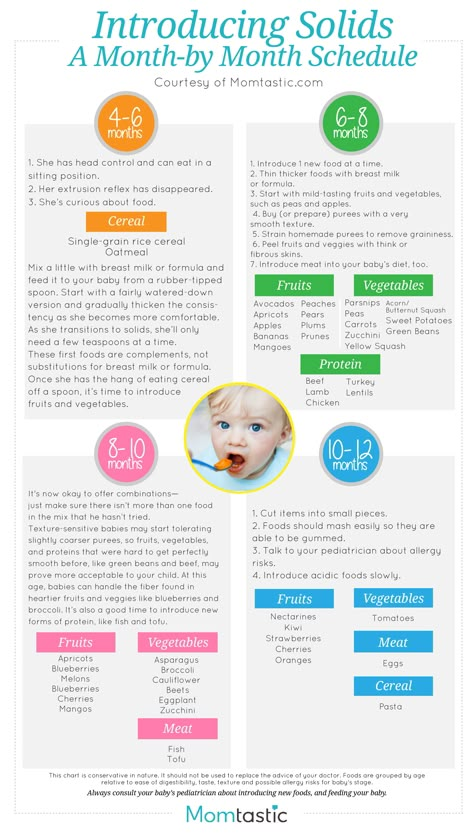
However, if the two signs listed above seem to go hand-in-hand, then you can be pretty certain that you’re feeding your baby more solid food than is good for her, and it’s causing her to take in less breastmilk or formula than she needs.
Too Much Solid Food and Not Enough Breastmilk/Formula? Ways to Solve the ProblemIf you suspect your baby’s consuming too much solid food and not enough breastmilk or formula, there are a two simple steps you can take to fix the situation.
-
Offer breastmilk or formula before offering solids.
This one just makes sense, right? When your baby’s at his hungriest, offer him the breast (or the bottle) before you give him a handful of cheerios or a dish of mashed bananas. That‘ll help ensure that he drinks plenty of breastmilk or formula. It’ll also help take the edge off his appetite for solids.
-
Offer (a little) less solid food.
Some people suggest stopping solids altogether, and going back to a breastmilk/formula only diet.
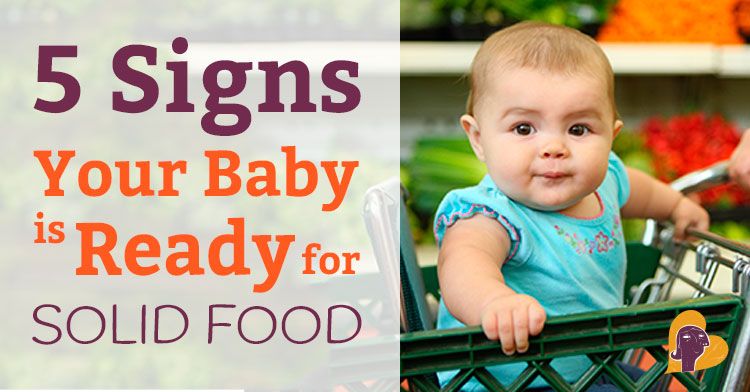 We generally don’t recommend this strategy, since it’s not a good method for striking a balance between solids and breastmilk or formula.
We generally don’t recommend this strategy, since it’s not a good method for striking a balance between solids and breastmilk or formula. Instead, if you suspect you’re offering too much solid food, we recommend cutting back on serving sizes a bit. Simply offer your baby a little less solid food than you normally would. That (in combination with nursing or bottle feeding before you offer solids) should ensure that your baby isn’t eating too much solid food.
What if you could find everything you needed to know about starting your baby on solid foods – when it’s best to start solids, how to introduce solids, complications, food allergies, etc. – in one easy-reference guide? Now you can! Your Baby’s Start To Solid Foods: A Comprehensive Guide will walk you through every step of starting solids. Plus, your e-Book package includes several bonus materials, designed to maximize your success in starting solids. You’ll get a thorough guide to treating constipation, a dietitian’s advice on how to avoid 5 common solid-foods mistakes, and a weekly meal plan for your baby’s first year. Grab your e-Book today, and ensure your baby has the healthiest possible start to solid foods!
You’ll get a thorough guide to treating constipation, a dietitian’s advice on how to avoid 5 common solid-foods mistakes, and a weekly meal plan for your baby’s first year. Grab your e-Book today, and ensure your baby has the healthiest possible start to solid foods!
Was your baby a big solids eater? How did you strike a balance between solid food and breastmilk/formula? Share your tips below!
The Baby Sleep Site® is a participant in the Amazon Services LLC Associates Program and other product affiliate programs. If you click on a product link and make a purchase, The Baby Sleep Site® may (but not always) receive a small commission from the company selling the product, but will not affect your purchase price. We only recommend products that we believe are quality products and are good for our readers.
Need Baby and Toddler Sleep Help? We Have the Resources You Need!If you are tired of wading through stacks of baby sleep books that just aren't working, if you are beyond exhausted and just can't solve your child's sleep problems on your own. ..then personalized sleep consulting is for you. We have been around since 2008 and invite you to tap into our MANY years of experience. Our team of expert consultants will create a Personalized Sleep Plan® just for your family and then support you through every step of implementing your plan. We encourage you to consider our personalized, one-on-one baby and toddler sleep consultation packages if you want to see real, meaningful results now. Your consultation package also includes ample follow-up help, designed to help you troubleshoot problems and tweak your plan as needed.
..then personalized sleep consulting is for you. We have been around since 2008 and invite you to tap into our MANY years of experience. Our team of expert consultants will create a Personalized Sleep Plan® just for your family and then support you through every step of implementing your plan. We encourage you to consider our personalized, one-on-one baby and toddler sleep consultation packages if you want to see real, meaningful results now. Your consultation package also includes ample follow-up help, designed to help you troubleshoot problems and tweak your plan as needed.
Learn More About Services
For those persistent nighttime struggles, check out The 3 Step System to Help Your Baby Sleep. Using the same unique approach and practical tools for success, this e-book helps you and your baby sleep through the night.
Learn More About The 3-Step System
If you’re looking for ways to get your baby or toddler into a healthy sleeping routine during the day, explore Mastering Naps and Schedules, a comprehensive guide to napping routines, nap transitions, and all the other important “how-tos” of good baby sleep. With over 45 sample sleep schedules and worksheets, Mastering Naps and Schedules is a hands-on tool ideal for any parenting style.
With over 45 sample sleep schedules and worksheets, Mastering Naps and Schedules is a hands-on tool ideal for any parenting style.
Learn More About Mastering Naps
For those persistent toddler sleep struggles, check out The 5 Step System to Help Your Toddler Sleep. Using the same unique approach and practical tools for success, this e-book helps you and your toddler sleep through the night and enjoy a better daytime schedule.
Learn More About The 5-Step System
Join our VIP Members Area packed with exclusive content and resources: e-Books, assessments, detailed case studies, expert advice, and more. As a VIP member, you'll also enjoy a weekly chat with an expert sleep consultant.
Learn More About VIP Membership
In over 10 years, we have over 10,000 comments on our blog.
At this time, we’ve turned the comment sections off.
We would, of course, love to hear from you! For help with your specific sleep problems, please learn more about our DIY resources or our sleep consultation services. Or, consider emailing us for a fast and helpful response!
Is It Possible to Overfeed My Baby?
Learn to read your baby's cues and pay attention to the recommended number of servings of food from the major food groups a baby needs in a day
When your baby was on formula or breast milk, the advice was to feed him on demand and stop when he showed signs of fullness. You were unlikely to overfeed your baby if you listened to his cues.
But what happens when your baby starts eating solid food: is it possible to overfeed him? The short answer is: yes, if you ignore his cues and are not offering the right foods.
Here’s some advice on how to prevent overfeeding your baby:
- Look out for cues and stop feeding your baby when he is full.

- Feed your baby solids on schedule, not on demand.
- Know what baby should be eating and the recommended portion sizes
Related: Help Your Baby Develop
1. Look Out for Cues and Stop Feeding When Baby's Full
Your little one will know how much food he wants. Do not force your child to eat if he is not hungry or interested—he does not need to finish everything on the plate. Offer smaller portions of healthy food and let him choose how much to eat.
Don’t worry, your baby will eat up during the next meal if he is hungry, or ask for milk if he is still in the weaning stage.
Signs your baby is full
- Turning his face away
- Shaking his head
- Closing his mouth or refusing to open it when you offer food
- Spitting out food
- Appearing uninterested or distracted
Related: Nutrition for Your Toddler
2. Eat on Schedule, Not on Demand
Have a meal schedule for your baby once he’s started on solids. Set a time for breakfast, lunch, dinner, and snacks and let your baby get used to the routine.
Set a time for breakfast, lunch, dinner, and snacks and let your baby get used to the routine.
When you’re just introducing your little one to solids, you will still need to offer the bottle or breast on demand, but once you have made a complete switch to solids, stick to this schedule.
Related: Getting Ready for Solids
3. Know What Baby Should Be Eating and the Recommended Portion Sizes
For your toddler to obtain all the nutrients he needs, feed him a variety of food from the four main food groups in the correct portions.
Below is a guide to the food groups and how much of each your baby should be eating in a day.
Children 1 to 2 years old
Food groups | Recommended number of servings per day |
Brown rice and wholemeal bread | 2 — 3 |
Fruit | ½ — 1 |
Vegetables | ½ |
Meat & Others | ½ |
Fruit should not be used to replace vegetables in the diet or vice versa because they contain different types of nutrients.
For more information on what 1 serving of each food group means and sample daily meal plans, read Early Nutrition for Babies.
Remember, these are only recommendations—listen to your baby’s cues and you are likely to be on the right track. Good job, mummy and daddy!
Visit Parent Hub, for more useful tips and guides to give your baby a healthy start.
Download the HealthHub app on Google Play or Apple Store to access more health and wellness advice at your fingertips.
Read these next:
- Baby's First Food Journey
- Early Childhood Nutrition
- Getting Your Baby Started on Solids
- Things New Dads Need to Know
This article was last reviewed on Tuesday, December 21, 2021
Catalog-Item Reuse
Learn to read your baby's cues and pay attention to the recommended number of servings of food from the major food groups a baby needs in a day
<div><div><p>When your baby was on formula or breast milk, the advice was to feed him on demand and stop when he showed signs of fullness. You were unlikely to overfeed your baby if you listened to his cues.</p><p>But what happens when your baby starts eating solid food: is it possible to overfeed him? The short answer is: yes, if you ignore his cues and are not offering the right foods.</p><p>Here’s some advice on how to prevent overfeeding your baby:
You were unlikely to overfeed your baby if you listened to his cues.</p><p>But what happens when your baby starts eating solid food: is it possible to overfeed him? The short answer is: yes, if you ignore his cues and are not offering the right foods.</p><p>Here’s some advice on how to prevent overfeeding your baby:
</p><ol><li>Look out for cues and stop feeding your baby when he is full.</li><li>Feed your baby solids on schedule, not on demand.</li><li>Know what baby should be eating and the recommended portion sizes</li></ol><p></p><p>
<strong>Related:
<a href="https://www.healthhub.sg/live-healthy/1198/baby-help-your-baby-develop" title="Help Your Baby Develop">Help Your Baby Develop</a></strong></p></div><div><h3>1. Look Out for Cues and Stop Feeding When Baby's Full</h3><p>Your little one will know how much food he wants. Do not force your child to eat if he is not hungry or interested—he does not need to finish everything on the plate. Offer smaller portions of healthy food and let him choose how much to eat.</p><p>Don’t worry, your baby will eat up during the next meal if he is hungry, or ask for milk if he is still in the weaning stage.</p><h4>Signs your baby is full</h4><ul><li>Turning his face away</li><li>Shaking his head</li><li>Closing his mouth or refusing to open it when you offer food</li><li>Spitting out food</li><li>Appearing uninterested or distracted</li></ul><p>
Do not force your child to eat if he is not hungry or interested—he does not need to finish everything on the plate. Offer smaller portions of healthy food and let him choose how much to eat.</p><p>Don’t worry, your baby will eat up during the next meal if he is hungry, or ask for milk if he is still in the weaning stage.</p><h4>Signs your baby is full</h4><ul><li>Turning his face away</li><li>Shaking his head</li><li>Closing his mouth or refusing to open it when you offer food</li><li>Spitting out food</li><li>Appearing uninterested or distracted</li></ul><p>
<strong>Related:
<a href="https://www.healthhub.sg/live-healthy/1243/baby-nutrition-for-your-toddler" title="Nutrition for Your Toddler">Nutrition for Your Toddler</a></strong></p></div><div><h3>2. Eat on Schedule, Not on Demand</h3><p>Have a meal schedule for your baby once he’s started on solids. Set a time for breakfast, lunch, dinner, and snacks and let your baby get used to the routine.</p><p>When you’re just introducing your little one to solids, you will still need to offer the bottle or breast on demand, but once you have made a complete switch to solids, stick to this schedule.</p><p>
Set a time for breakfast, lunch, dinner, and snacks and let your baby get used to the routine.</p><p>When you’re just introducing your little one to solids, you will still need to offer the bottle or breast on demand, but once you have made a complete switch to solids, stick to this schedule.</p><p>
<strong>Related:
<a href="https://www.healthhub.sg/live-healthy/1227/baby-getting-ready-for-solids" title="Getting Ready for Solids">Getting Ready for Solids</a></strong></p></div><div><h3>3. Know What Baby Should Be Eating and the Recommended Portion Sizes</h3><p>For your toddler to obtain all the nutrients he needs, feed him a variety of food from the four main food groups in the correct portions.</p><p>Below is a guide to the food groups and how much of each your baby should be eating in a day.</p><h4>Children 1 to 2 years old</h4><div><table cellspacing="0"><tbody><tr><td><p>
<strong> Food groups</strong></p></td><td><p>
<strong> Recommended number of servings per day</strong></p></td></tr><tr><td><p>Brown rice and wholemeal bread</p></td><td><p>2 — 3</p></td></tr><tr><td><p>Fruit</p></td><td><p>
<span lang="EN-US">½ </span><span></span>— 1</p></td></tr><tr><td><p>Vegetables</p></td><td><p>
<span lang="EN-US">½</span><span></span></p></td></tr><tr><td><p>Meat & Others
</p></td><td><p>
<span>½</span></p></td></tr><tr><td rowspan="1">Dairy
</td><td rowspan="1">1 <span lang="EN-US">½</span>
</td></tr></tbody></table></div></div><p>
</p><p>Fruit should not be used to replace vegetables in the diet or vice versa because they contain different types of nutrients. </p><p>For more information on what 1 serving of each food group means and sample daily meal plans, read
</p><p>For more information on what 1 serving of each food group means and sample daily meal plans, read
<a href="https://www.healthhub.sg/programmes/122/early-nutrition-for-babies#1year-above" title="Early Nutrition for Babies">Early Nutrition for Babies</a>.</p><p>Remember, these are only recommendations—listen to your baby’s cues and you are likely to be on the right track. Good job, mummy and daddy!
</p><p><a href="https://www.healthhub.sg/programmes/183/parent-hub/baby-toddler/childhood-healthy-diet">Visit Parent Hub, for more useful tips and guides to give your baby a healthy start.</a></p><p><em>Download the HealthHub app on
<a href="https://play.google.com/store/apps/details?id=sg.gov.hpb.healthhub&hl=en_SG" target="_blank" rel="nofollow">Google Play</a> or
<a href="https://itunes.apple.com/sg/app/healthhub-sg/id1034200875?mt=8" target="_blank" rel="nofollow">Apple Store</a> to access more health and wellness advice at your fingertips. </em>
</em>
</p>
<hr /><p>
<strong>Read these next:</strong></p><ul><li>
<a href="https://www.healthhub.sg/live-healthy/156/babys_first_food_journey" title="Baby's First Food Journey">Baby's First Food Journey</a></li><li>
<a href="https://www.healthhub.sg/programmes/122/early-nutrition-for-babies" title="Early Childhood Nutrition">Early Childhood Nutrition</a></li><li>
<a href="https://www.healthhub.sg/live-healthy/2020/getting-baby-started-on-solids" title="Getting Your Baby Started on Solids">Getting Your Baby Started on Solids</a> </li><li>
<a href="https://www.healthhub.sg/live-healthy/1579/things-new-dads-need-to-know" title="Things New Dads Need to Know">Things New Dads Need to Know</a></li></ul>
</div>
Tuesday, September 4, 2018
Thursday, December 13, 2018
No
1945
Tuesday, December 21, 2021
<div>Health Promotion Board </div>
/sites/assets/Assets/Logos%20and%20Official/HPB_R_V_CMYK_Logo.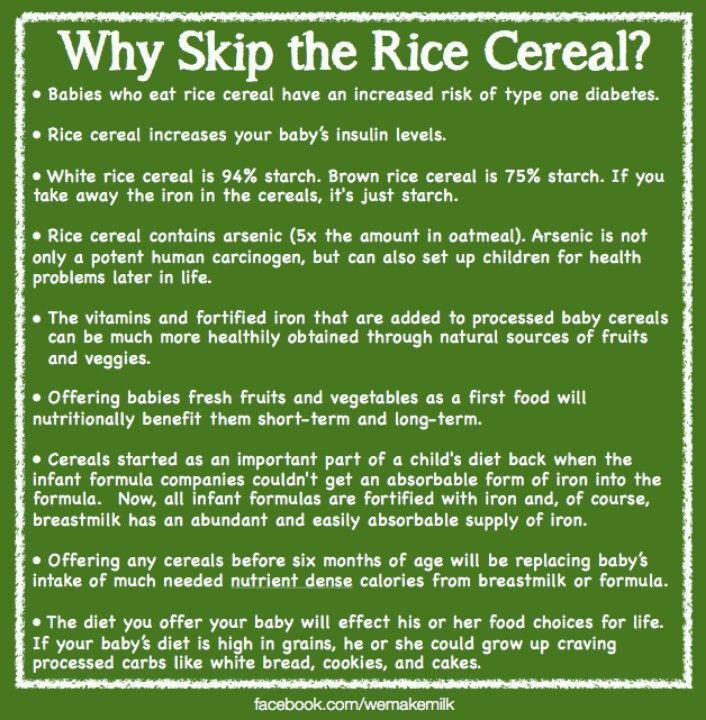 jpg
jpg
Health Promotion Board
https://www.hpb.gov.sg
Q&A: Is It Possible to Overfeed My Baby?
Articles
Child - little baby: what to do? | Publishing House AST
1. Offer the same food that you eat yourself.
Children are always very interested in the food their parents eat. Thousands of years of evolution have shaped the attitude in children: I eat what my environment eats. If others do not eat this food, it may be poisonous. From the point of view of eating behavior, even a sample from the parent's plate of not the healthiest food is better than food prepared separately for the child.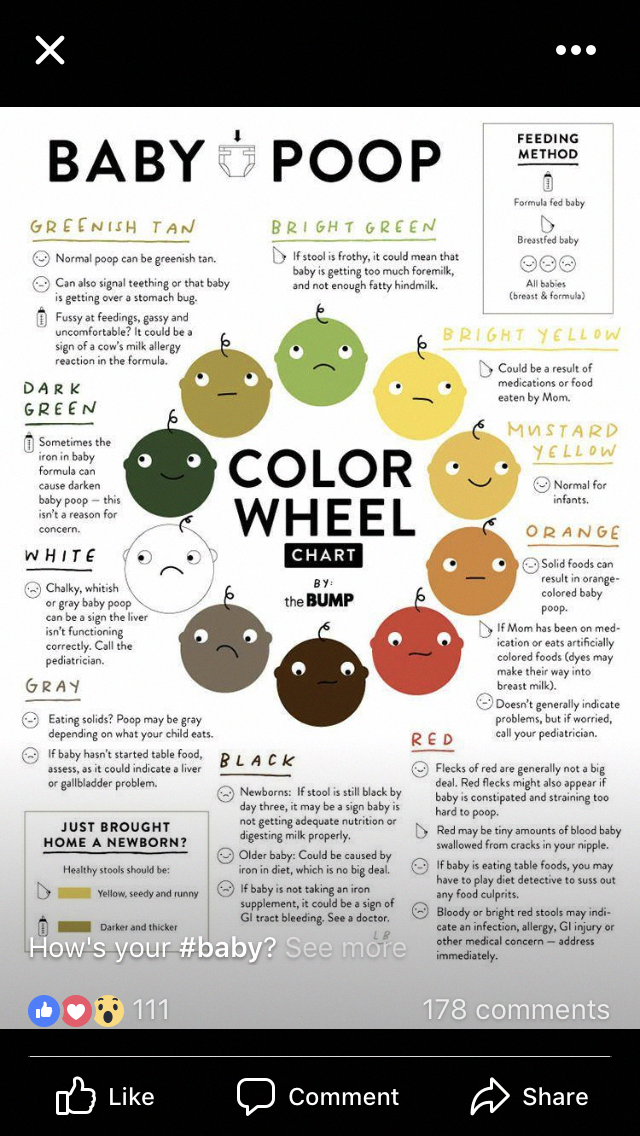
2. Eat with your child.
Food, in addition to survival, has a social function. Many families have the opportunity to spend time together only during joint meals. It is important for children to feel part of the family, to be involved in the family. By placing a child at a separate table, arranging feedings at an unusual time for the rest of the family (especially if there is only one child in the family), we isolate him from the family, depriving him of the opportunity to observe and copy.
Food, in addition to survival, has a social function. Many families have the opportunity to spend time together only during joint meals. It is important for children to feel part of the family, to be involved in the family. By placing a child at a separate table, arranging feedings at an unusual time for the rest of the family (especially if there is only one child in the family), we isolate him from the family, depriving him of the opportunity to observe and copy.
3.
 Start with yourself.
Start with yourself. If you want to arouse interest in a certain product, eat it yourself, regularly, with pleasure. Offer it to your child in the form of a clearly distinguishable piece: if it is a fish, then not in the form of a 10-ingredient-in-one casserole, but in the form of a separate and understandable piece of fish.
For children 2-4 years old, dishes with clearly distinguishable ingredients are important, from which they can choose “I eat this” and “I don’t want this”. Distinguishable components are an incentive to choose “what I love”.
4. Be patient.
As much as we would like to change everything at the snap of our fingers, dietary adjustments can take a long time - from several weeks to several months.
“Tuning” the diet is like tuning a musical instrument, delicate and almost jewelry work. Attempts to “adjust” with a hammer or twist the strings harder break the instrument. It takes up to three weeks for toddlers to accept a product on their plate, and as much or more to agree to try it.
If the child refuses once, do not give up trying, it is important to move smoothly and confidently along the chosen path. Your child will definitely resist change, this is normal.
Children are conservative by nature - it's easier to survive that way. Follow your mom, follow the rules, and everything will be fine. It is very easy for a child to get used to rituals and routines if this is repeated day after day.
When a child from the feeding period is persuaded, deceived, entertained, forced at the table - he gets used to it and is sure that it should be so. If a mother draws muzzles on porridge with jam and cuts out vegetables figuratively, the child gets used to it and considers this the norm.
Everything is fine, until suddenly mom decides “Enough! I won’t cut it, I’ll turn off the cartoon and I won’t persuade.”
Mom is easy to understand: she is tired of rituals. However, the kid cannot understand this: for him the world has turned upside down, the familiar environment has changed and the rituals have disappeared.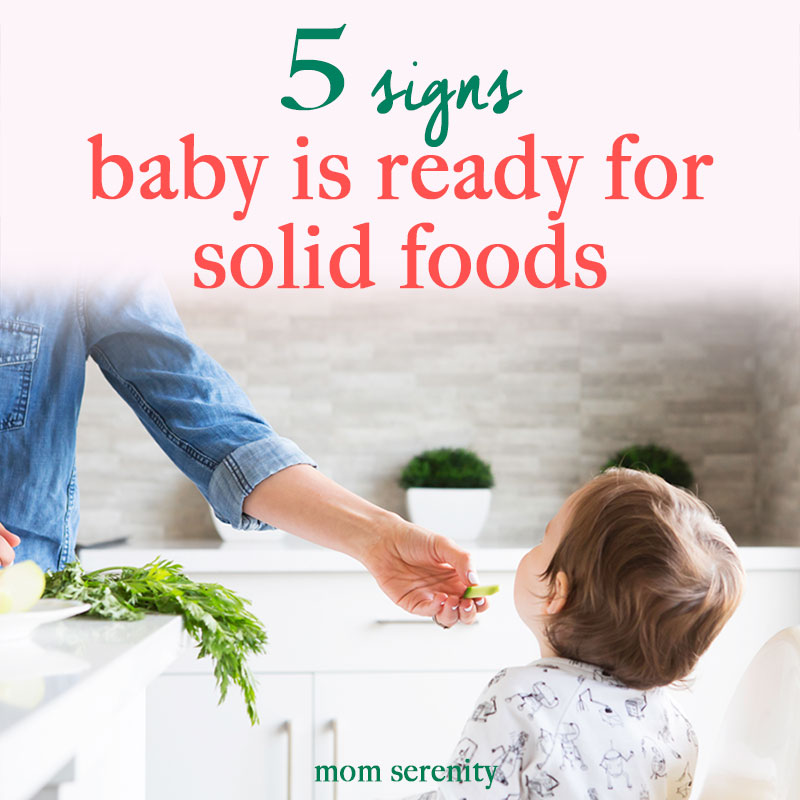 He was not prepared for change, he was simply "driven out of the cave into the forest."
He was not prepared for change, he was simply "driven out of the cave into the forest."
Feel like crying? Not! I want to sob, scream, hide under the sofa and not get out until the familiar world returns. By his behavior, the baby reports: “Alarm, trouble, urgently save me!” In this state, he cannot perceive speech, suggestions and explanations, he needs to "become as it was."
If you return the habitual (draw a face, cut it habitually, put it on your favorite plate), the child will understand that everything is fine.
Outwardly, it looks like a “demand and manipulation”, and we begin to educate: not to give in, to ignore, to insist on our own. The child plunges into chronic stress, adrenaline and cortisol block the rudiments of appetite.
Looks like a hunger strike. Against this background, children can lose weight, sleep worse, get sick. The older our kid is, the more he protests. The smallest joyfully break away from the table and enjoy the fact that they are not persuaded, not forced, and generally released into the wild. Older children begin to suspect: what if what mom is doing is another attempt to feed me? Is this some sort of scam?
Older children begin to suspect: what if what mom is doing is another attempt to feed me? Is this some sort of scam?
And the child protests. He protests about changing the usual rituals - he ate with cartoons all his life, and then they were turned off. The usual environment has changed - panic, return as it was. He protests about the introduction of new rituals: suddenly vegetables appeared on the table from somewhere, suddenly they stopped persuading, suddenly they allowed candy before soup. What's happening? I do not understand! If the child’s diet was sweet, then the body also protests: he suddenly stopped receiving quick nourishment, his mood deteriorates, and external changes do not allow eating other food.
This is why children need long periods of adjustment to change their diet and feeding habits. We cannot bring down everything new that we have come up with, we need to give time to adapt to each change. For some, 2-3 days are enough, others need a week or a month to adopt new rules of the game, to stop suspecting and being afraid.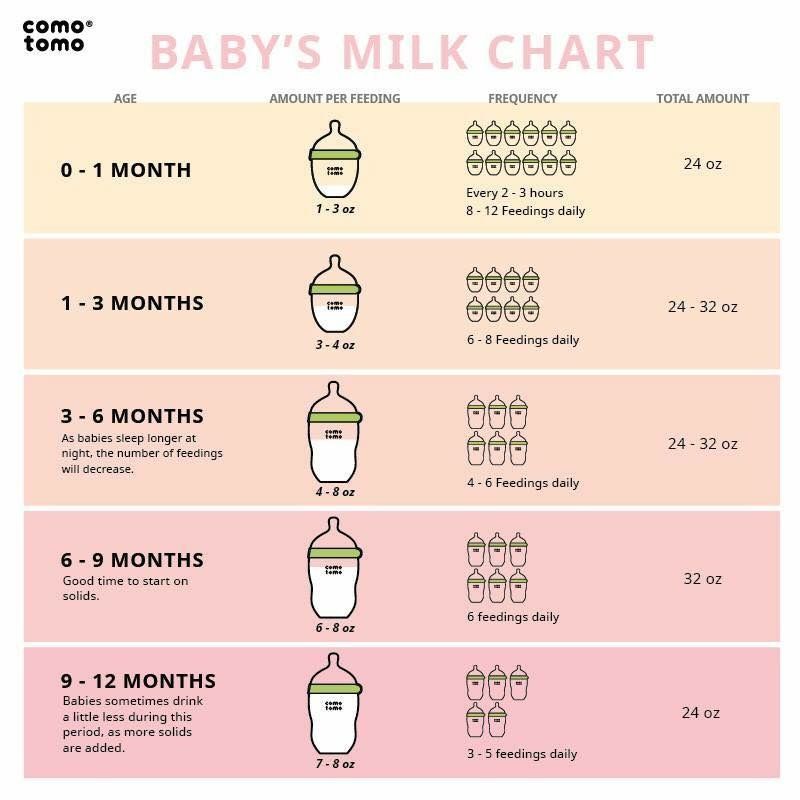 The fewer changes that occur at one point in time, the more comfortable the child is to accept them and the less resistance.
The fewer changes that occur at one point in time, the more comfortable the child is to accept them and the less resistance.
Therefore, it is important to start with a routine, then add rituals of family feasts without entertainment, and after that, change the baby's diet.
How to teach a child to chew food properly
Modern man has a big problem - we do not know how to eat. Adults do not have enough time for a normal meal at a calm pace, and in most cases children are not even taught to chew. Many parents specifically feed their babies soft or pureed foods. Everyone is afraid that the child will be capricious or choke. Let's figure it out - what is the mistake of this approach and why is chewing so important?
Usually people literally swallow food and quickly wash it down with a hot or sweet liquid, and this is where the meal ends. Among the consequences: digestive problems and regular overeating, since the body requires much more energy to absorb poorly chewed food.
The process of digestion of food begins in the oral cavity. Saliva is secreted in the mouth, which contains enzymes and breaks down easily soluble substances and softens more dense ones. Teeth and tongue grind and grind food. By the time the food enters the stomach, it will be much easier to digest and assimilate it than if you just swallow the product (otherwise it will ferment, which will negatively affect the digestive tract).
According to Chinese and American studies published in The American Journal of Clinical Nutrition, participants in the experiment consumed 11.9% fewer calories, regardless of their build, their body was satiated faster, less likely to have a feeling of hunger, and even managed to lose some weight.
We are not united with food
Chewing not only ensures a normal digestive process, but also has a number of other benefits. If in time (from 6-7 months) you start to teach the baby to chew, he will form an overbite. What's more, a Belgian study published in the journal J Voice showed that chewing promotes the proper development of speech.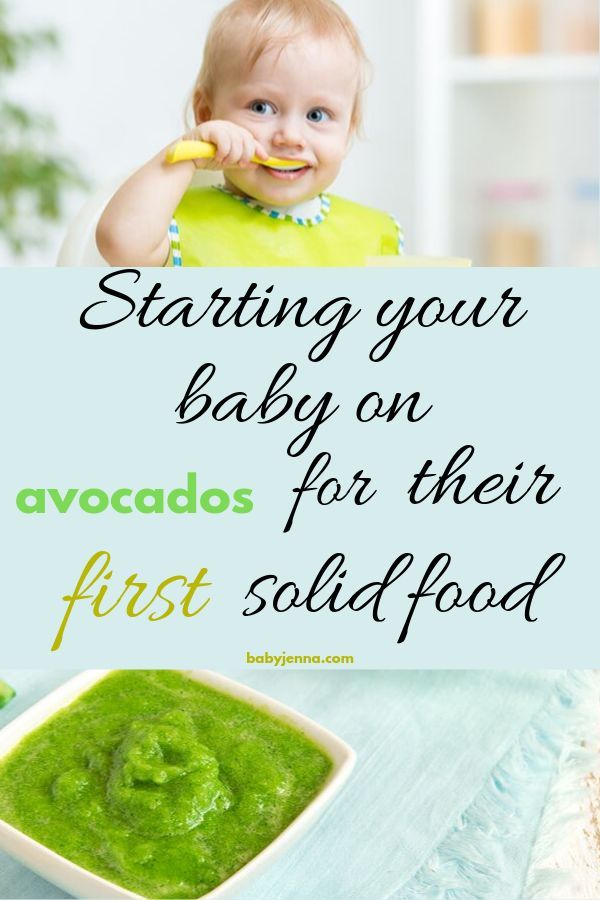 When a baby chews, bites, or licks, the lips, tongue, cheeks, and jaws work. This is how the same motor skills develop as when speaking. In practice, it turns out that the process of eating food is the most pleasant type of articulatory gymnastics.
When a baby chews, bites, or licks, the lips, tongue, cheeks, and jaws work. This is how the same motor skills develop as when speaking. In practice, it turns out that the process of eating food is the most pleasant type of articulatory gymnastics.
Pediatrician of the highest category Yulia Viktorovna Andronnikova told us about other functions of chewing:
- Slow chewing allows you to get enough of less food, as the signal will have time to reach the hunger and appetite regulation centers.
- Chewing movements activate areas of the cerebral cortex that are responsible for cognitive abilities. In children, chewing stimulates development. If this process is disturbed, dementia can progress in old age.
- Chewing movements form the facial skeleton, which is very important for proper breathing and blood supply to the central nervous system.
- Not a single cosmetic procedure will help to keep in good shape and improve the blood supply to the mimic muscles of the face like proper (slow) chewing.

How to chew
Eat consciously, disconnecting from external stimuli. Place a small portion in your mouth and chew at least 32 times. (1 for each healthy tooth + 3 for each missing one).
There is a method of therapeutic chewing:
- the first week - each spoonful of food is chewed ONE minute
- second week - TWO minutes
- third week - THREE
- fourth - TWO
- fifth - ONE
When and how to teach your child
To prepare your child for chewing, you can make faces, make faces and make chewing movements. When the baby "speaks baby", answer him. The child will repeat after you and actively move his jaws, tongue and lips.
The sooner parents introduce their child to foods of different hardness, the more willing they are to try new foods. As soon as the child began to make chewing movements, slurp and smack, he developed a food interest, and especially when the first teeth appear, you can give pieces of food (soft boiled vegetables, such as carrots). The optimal age for the first acquaintance with food is 6-7 months. Children are old enough to accept new food, but still too young to start acting up and resenting at the table.
The optimal age for the first acquaintance with food is 6-7 months. Children are old enough to accept new food, but still too young to start acting up and resenting at the table.
What to feed
Offer your child food that won't crumble in the mouth or get stuck. No bread or berries! You can give your child a banana, boiled potatoes, baby cottage cheese or a baked apple. When the child "masters" these products, offer him boiled beets, peeled cucumber or a piece of cheese.
Pitfalls
Up to six months, children have an active expulsion reflex - a natural defense against suffocation. Therefore, at the beginning of "communication" with semi-solid food, the child may choke and spit out food. There is no need to be frightened and abruptly return to mashed potatoes and ground products! Chewing is a skill and needs to be developed.
If you have introduced semi-solid food long enough and the child is still choking, give him time. Put food in front of the baby and watch - let him try to put food in his mouth with his hand on his own.

